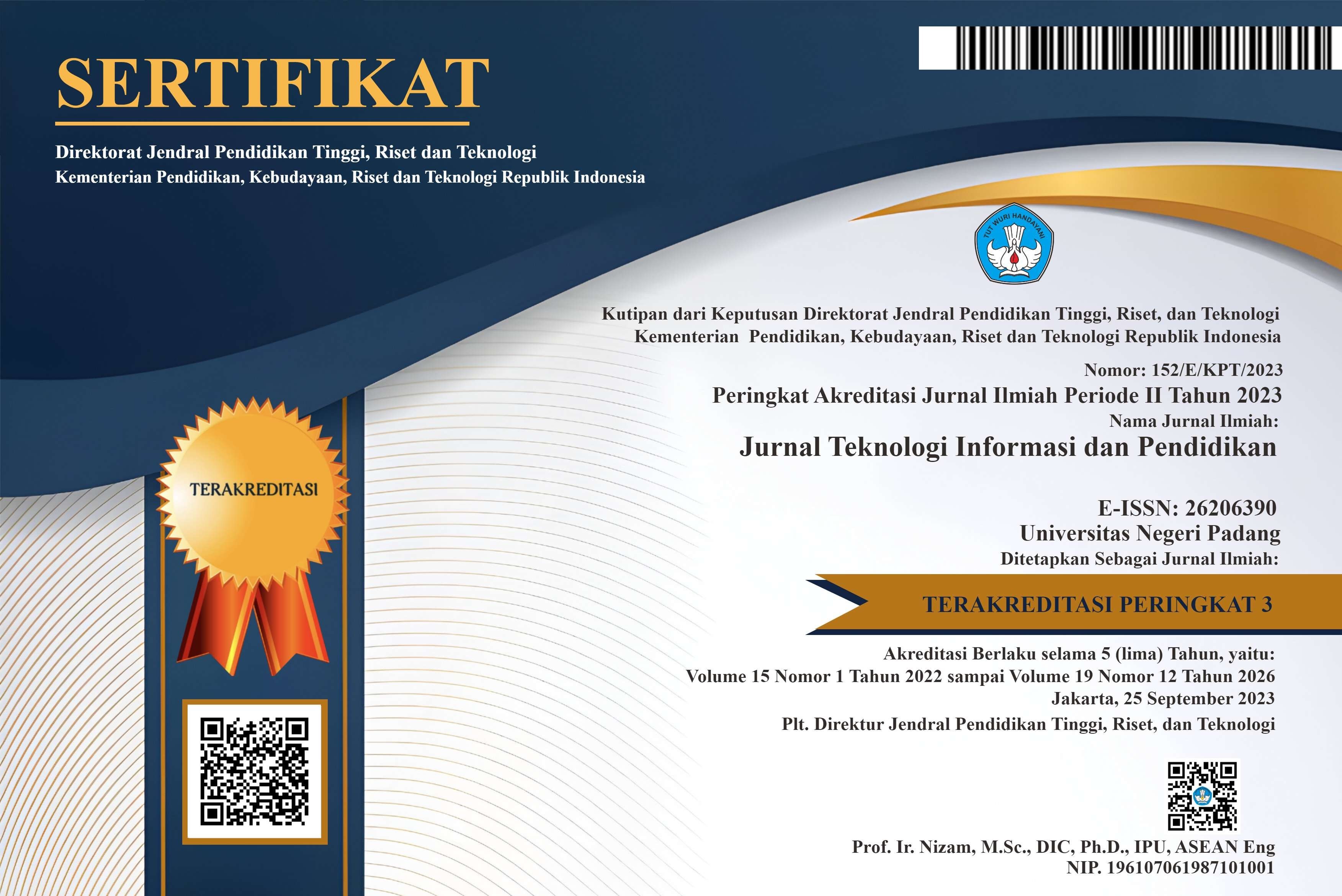TRANSPARANSI PENILAIAN DENGAN METODE AUTHENTIC ASSESSMENT MELALUI APLIKASI WHATSAPP
Abstract
Abstract: The low response given by parents to the information conveyed through the whatsapp class group and the high desire of parents to find out the value of children in each test, encourages teachers to innovate to solve these problems. This research is a qualitative research that aims to inform the assessment process through the application of whatsapp with the authentic assessment method. The subjects of this study were students of class III SD Negeri 4 Metro Timur and parents of students who were members of the whatsapp class group of 26 people. Data collection is done by making observations with observation sheets and direct interviews. Submission of information is carried out by the teacher through WA starting from the assessment process, compiling an assessment rubric, evaluating both themes and subjects to carrying out improved grades or remedial. From the observations it is known that parents of students are very enthusiastic about the transparency of the assessment conducted by the teacher as much as 84% of students' parents see and comment, 12% see and 4% do not see and do not comment. Parents come to understand the assessment process to show results, even to the improvement of grades. For this reason, the transparency of assessment will continue to be developed, not only focusing on exam results but also on the learning process.
References
Rahmansari Riskyta, (2012). Penggunaan Aplikasi Whatsapp dalam Komunikasi Organisasi Pegawai Dinas Lingkungan Hidup dan Kebersihan Sidoarjo. Sidoarjo Jawa Timur: Jurnal Ilmiah Manajemen Publik dan Kebijakan Sosial Vol. 1 No. 2. Universitas Dr. Sutomo. DOI: http://dx.doi.org/10.25139/jmnegara.v1i2.788 1
Sihabudin Ahmad. (2013). Teknologi informasi Komunikasi dan Gaya Hidup Mahasiswa. Jurnal Teknodik. Jakarta: DOI: http://dx.doi.org/10.32550/teknodik.v0i0.77
Witarsa Ramdhan, dkk. (2018). Pengaruh Penggunaan Gadget Terhadap Kemampuan Interaksi Sosial Siswa Sekolah Dasar.Jurnal Pedagogik Unisma Vol. VI, No. 1. http://jurnal.unismabekasi.ac.id/index.php/pedagogik/article/view/432
Wishnu E.W. (2012). Aplikasi Chatting untuk Android. Jakarta:PT Alex Media Komputindo.
Pertiwi Maya Syulfharita, dkk. (2018). Gambaran Perilaku Penggunaan Gawai dan Kesehatan MataPada Anak Usia 10-12 Tahun. Jurnal Keperawatan Muhamadiyah: Vol. 3 No. 1. DOI: http://dx.doi.org/10.30651/jkm.v3i1.1451
Puspa Andriana Kirana, dkk. (2018). Pengaruh Penggunaan Gadget terhadap Penurunan Kualitas Penglihatan Siswa Sekolah Dasar.National and International Scientific Journal of Unisba. Global Medical and Health Communication: Vol. 6 No. 1 Tahun 2018. DOI: http://dx.doi.org/10.29313/gmhc.v6i1.2471
Katherine Lunongo-Orlando. Authentic Assessment. Canada: Pembroke Publishers Limited
J.R Raco (2017) Penelitian Kualitatif. Jakarta: Grasindo.
Permendikbud No. 66 (2013) Standar Penilaian Pendidikan.
Nursetyo Kunto Imbar, (2015). E-Portofolio Sebagai Penilaian Autentik Dalam Kurikulum 2013. Jurnal Teknodik. Jakarta:DOI: http://dx.doi.org/10.32550/teknodik.v19i2.161
Elanine B. Johnson, (2007). Contextual Teaching and Learning: Menjadikan Kegiatan Belajar Mengajar Mengasikan dan Bermakna. Bandung. MLC.
Pramana Agus Bayu dan Dewa Bagus.(2019). Penilaian Autentik. Bali: CVMedia Educations. 12
Fitrah Muh. (2017. Penelitian Kualitatif, Tindakan Kelas dan Studi Kasus. Jakarta: CV Jejak.
Suryadi Edi, dkk. (2018). Penggunaan Sosial Media Whatsapp dan Pengaruhnya Terhadap Disiplin Belajar Peserta Didik Pada Mata Pelajaran Pendidikan Agama Islam. Bogor: Jurnal Pendidikan Islam Vol.07, No. 1 STAI Al Hidayah. DOI: 10.30868/EI.V7I01.2
Eliza.(2012). Kupas Tuntas Aplikasi Terbaik dan Populer Google Play.Jakarta: Elex Media Komputindo.
Copyright (c) 2020 JTIP: Jurnal Teknologi Informasi dan Pendidikan

This work is licensed under a Creative Commons Attribution-ShareAlike 4.0 International License.















.png)














